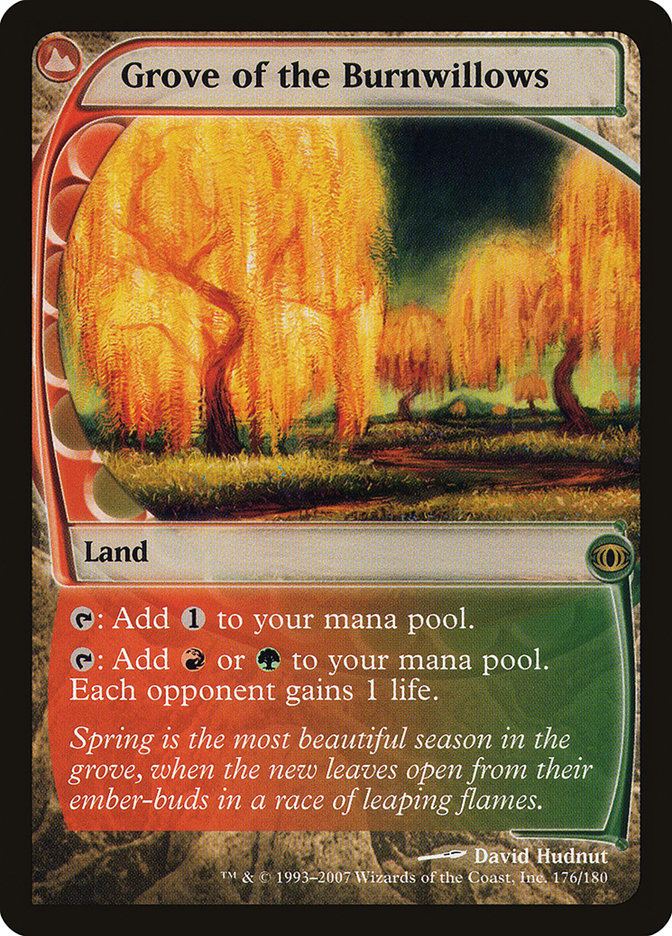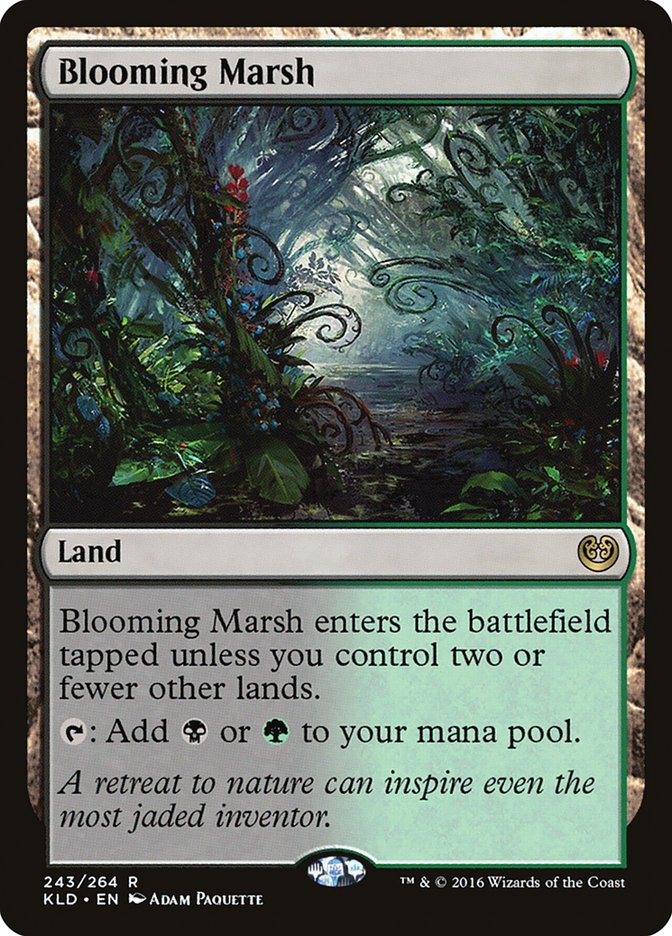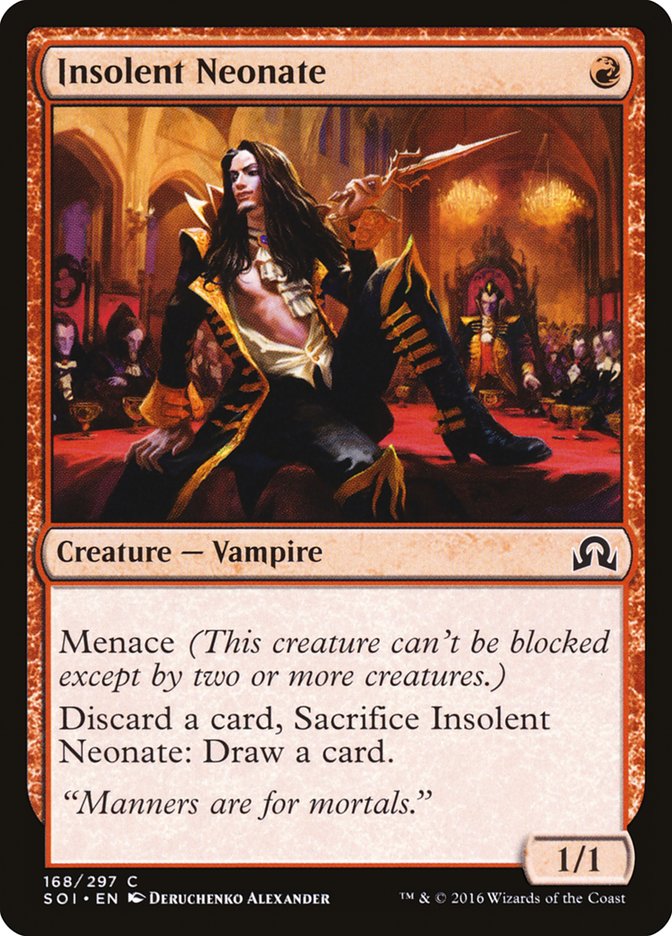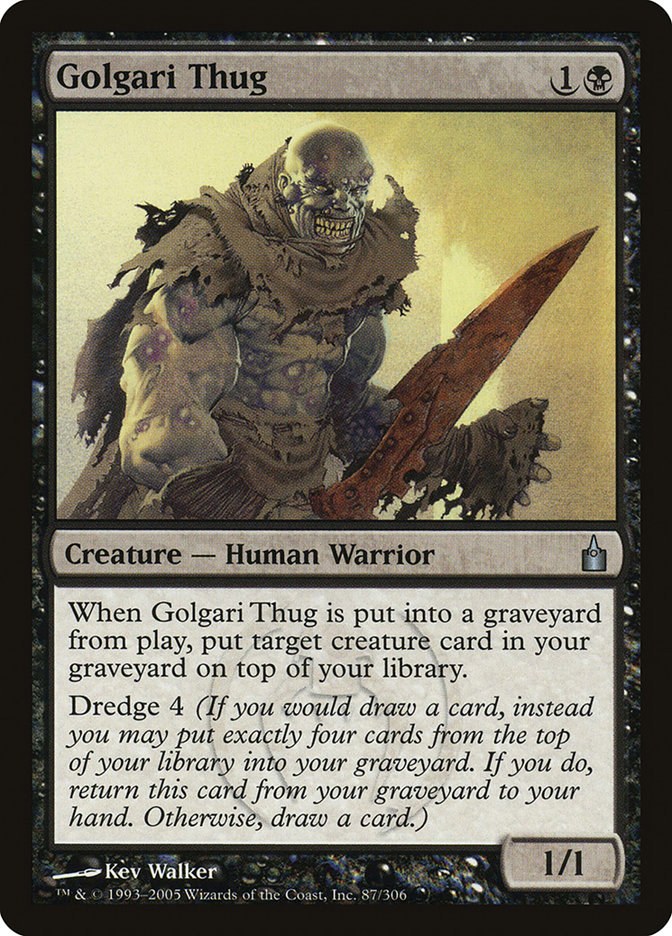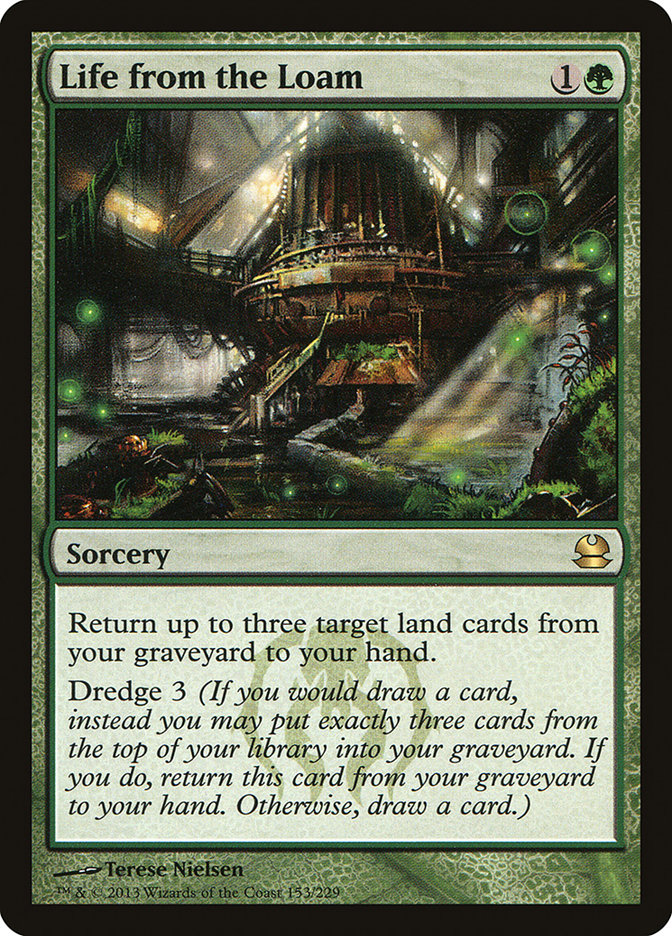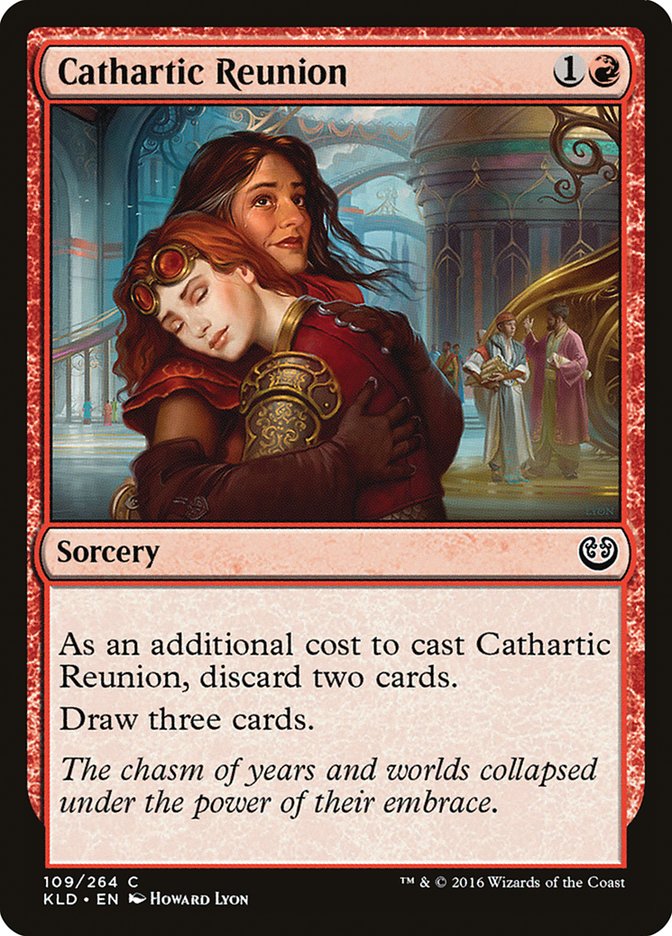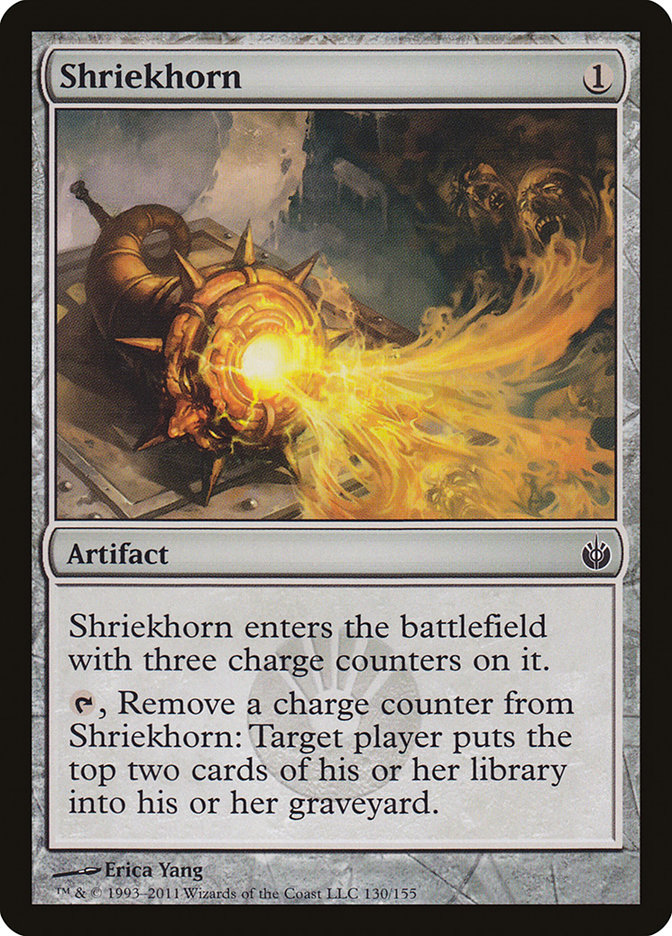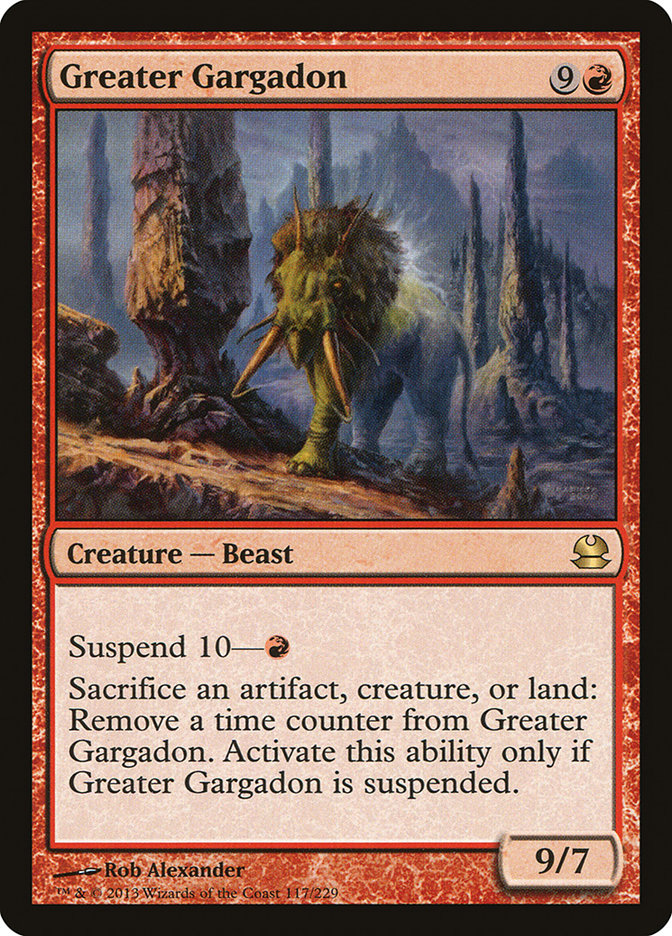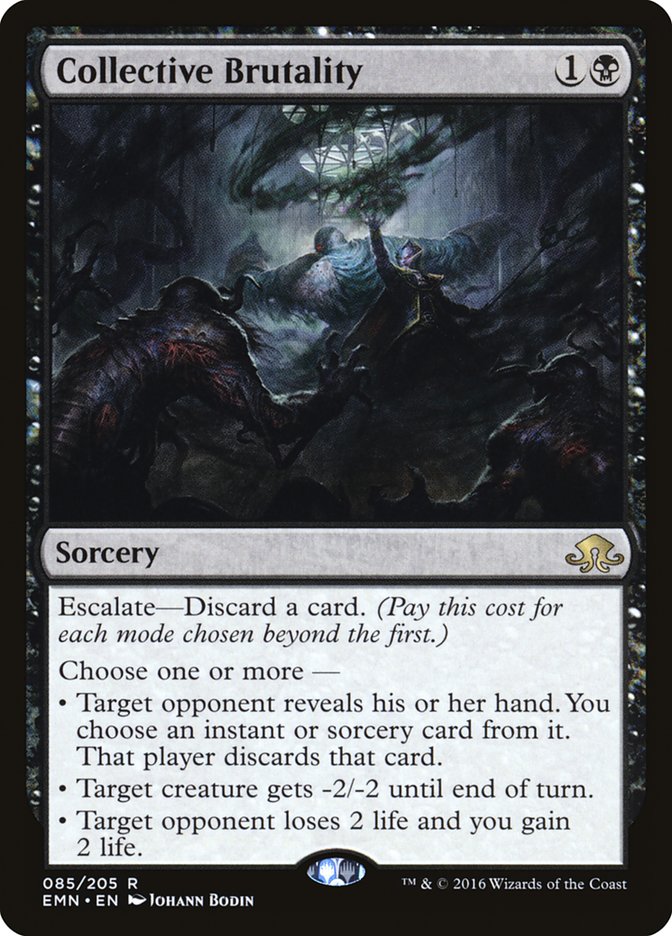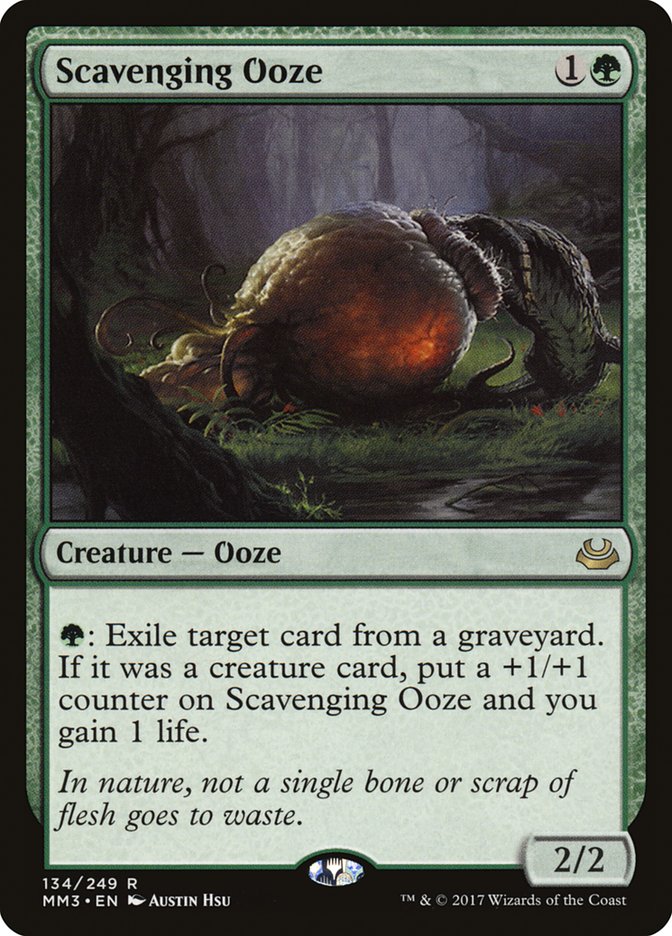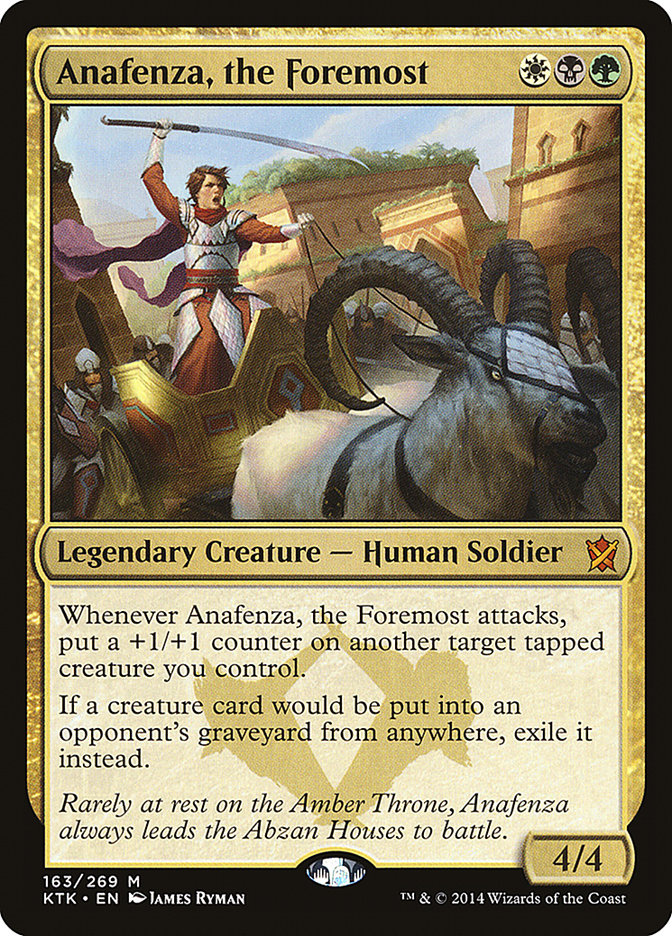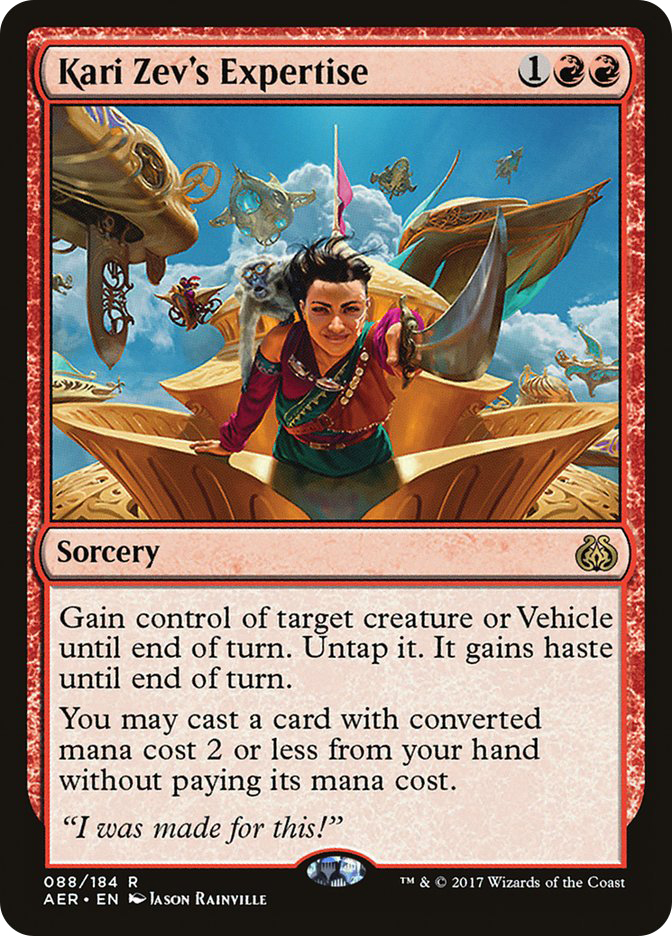Grand Prix San Antonio is this weekend, which has many people scouring decklists online and hustling for cards for a format that they may rarely play. I’m in cahoots with Todd Stevens and Dan Musser as my squad of choice. Maybe you can find us there in button-up shirts, ties, and leather jackets.
I see a big X in this picture: the crosshair of Modern players.
The news is out: Death’s Shadow is the deck to beat. Death’s Shadow decks are such a large part of the Modern metagame that you basically have to beat ’em or join ’em. For Grand Prix San Antonio’s Unified Modern structure, one of you could be joining while the others two are beating ’em.
Dredge has always been good against traditional Jund decks. Dredge largely blanks opposing discard and removal spells. Unsurprisingly, Dredge is arguably the worst matchup for Jund Death’s Shadow. However, if it’s not as good as a Death’s Shadow deck, is Dredge even worth playing?
For Unified Modern players, the numbers speak for themselves. Death’s Shadow Jund has way more tournament finishes. With both Dredge and Jund Death’s Shadow occupying the same colors and same manabase, you can only choose one or the other in your three-deck lineup.
Or can you? We’ll get back to that later.
Let’s take a look at a fairly stock build of Dredge from a recent Invitational Qualifier.
Creatures (24)
- 3 Golgari Thug
- 4 Stinkweed Imp
- 4 Narcomoeba
- 4 Bloodghast
- 4 Prized Amalgam
- 4 Insolent Neonate
- 1 Haunted Dead
Lands (20)
Spells (16)
Sideboard

Everything seems to be in order.
Four Life from the Loam and three Conflagrate: check.
No Golgari Grave-Trolls: check.
The one Haunted Dead: check.
Twenty lands: check.
Oh, a Darkblast. Not big news.
But if you take a closer look, those twenty lands you might’ve glossed over tell a story. No fetchlands or shocklands!
I know that Ross Merriam was working on Dredge without fetchlands or shocklands shortly after his win at the Syracuse Open last year. Kyle Lloyd’s manabase above looks similar to what Ross had back in October.
Not damaging yourself is quite nice. Not milling over fetchable lands is too.
Several things have changed since October. Golgari-Grave Troll is banned. Blooming Marsh has been printed. Death’s Shadow decks are running rampant. To a lesser extent, Gitaxian Probe is banned. I personally fiddled with Gitaxian Probe in Dredge to decent success. For relevancy’s sake here, though, it’s notable that Infect is no longer around, which felt a little bit like a bad matchup from playing it from both sides.
Without Golgari-Grave Troll, the new build of Dredge has to lean on the Life from the Loam / Conflagrate engine more. Also, without Golgari-Grave Troll, there is little reason to go to four or five lands. There are long games that involve triggering Bloodghast late or casting Life from the Loam and Conflagrate in the same turn, but overall, Dredge operates on three, which is just enough land to Flashback Faithless Looting.
Grove of the Burnwillows is a card I was considering for Dredge even before the Death’s Shadow boom. Sometimes Dredge wins by inches with key attacks and chump blocks and a Flashback Conflagrate for exactsies. Most of the time Dredge wins (or loses) by miles when the opponent improperly (or, unfortunately, properly) interacts with you.
This seemingly innocuous un-pain land from Future Sight has me favoring G/R Tron over the more popular G/W and G/B Tron builds. What’s better than killing a Death’s Shadow with your land? In multiples they can quickly roll back (forward?) the Death Shadow’s player’s life total to deal with the problem before it ever happens. An ounce of prevention is worth a pound of cure, they say.
Going into Team Unified Modern Constructed, I knew that I wanted Grove of the Burnwillows somewhere in the 225 cards. The idea for trying it in Dredge came from seeing Jody Keith’s winning Living End decklist from the Modern Classic from the SCG Tour stop in Dallas.
Creatures (26)
- 2 Avalanche Riders
- 1 Twisted Abomination
- 3 Simian Spirit Guide
- 4 Street Wraith
- 2 Faerie Macabre
- 4 Fulminator Mage
- 2 Pale Recluse
- 4 Monstrous Carabid
- 4 Deadshot Minotaur
Lands (19)
Spells (15)

Living End is a deck that also tends to win my miles when it does. Why not freeroll some good mana and a chance to ding a small Death’s Shadow too? His dead Death’s Shadow count is at three and counting, I hear. If not for color constraints that go along with fetchlands plus shocklands, he says, he would’ve jammed all four Grove of the Burnwillows in there.
Grove of the Burnwillows may not give Bloodghast haste or have you coming up short with a Conflagrate, but I think the pros outweigh the cons. When you have to play fair, it can be more of an issue. If you’re under a Grafdigger’s Cage that you can’t remove, then hardcast Gnarled Masses need all the help that they can get. Then again, I’m bringing in Nature’s Claim in those instances, so what’s a few life points more?
Dredge is nearly a Mono-Red deck splashing three other colors. It’s been universally accepted that an Overgrown Tomb or a basic Forest or Swamp shouldn’t be in the deck, so I’m skittish on adding a nonred source that’s not Dakmor Salvage. Blooming Marsh is better than all three of those as long as its three-land-or-fewer condition is met, which should be quite frequent in Dredge. Not entirely convinced that it makes the cut, although I’m really close.
Insolent Neonate was printed along with Prized Amalgam in Shadows over Innistrad to bring Dredge back from the dead, along with Golgari Grave-Troll’s short-lived unbanning. Discarding Golgari Grave-Troll to Insolent Neonate during the opponent’s second main phase was a great way to get the ball rolling with a dredge 6. With Stinkweed Imp being only marginally worse, you could count on Insolent Neonate being a fine card to open on.
Now, with Golgari Thug and Life from the Loam taking the space that Golgari Grave-Troll once held, those openings have been significantly nerfed. On a smaller note, the raw creature count for a hardcast Golgari Grave-Troll is now a non-issue. Maybe it’s time to take another look at the effectiveness of Insolent Neonate.
The version of Dredge that Ross won Syracuse with, of course, didn’t have Cathartic Reunion as it wasn’t printed yet. After that, Cathartic Reunion superpowered Dredge to the point where Golgari Grave-Troll had to be banned again. Something that wasn’t really adjusted was the number of discard outlets the deck played. It jumped from eight to twelve in the blink of an eye. Additionally, copies of Conflagrate now further inflate the outlet count.
You certainly want to put dredgers, Bloodghasts, and Prized Amalgams from your hand into your graveyard, but how many outlets is too many? I think the current count is a touch too high right now. Insolent Neonate is on the chopping block.
Shriekhorn has been forgotten and replaced with Cathartic Reunion. People never looked back after the natural switch from Golgari Grave-Troll to Golgari Thug.
Shriekhorn is essentially a “dredge 6” that occurs over three turns. The first activation comes at the opponent’s second main phase so Prized Amalgam gets to see Narcomeoba or other creatures that enter the battlefield from the graveyard. The second activation comes during your upkeep to get another shot at hitting Stinkweed Imp or other dredge card. You get four cards in the graveyard, similar to discarding and dredging a Golgari Thug. Then you get another mill-two the next turn.
Shriekhorn isn’t as fast and it can’t attack or block, but at least it’s reliable. I think Dredge needs the six more than a five or four (or three or two) that Insolent Neonate offers.
I wanted to talk about Greater Gargadon for a moment as I’m a huge fan of one-mana win conditions. Greater Gargadon was a key element of Dredge decks of mid-2016 with its synergy with Bridge from Below. It prevented your creatures from getting exiled from an Anger of the Gods while attacking the game from another axis. The threat of Greater Gargadon coming off suspend was as powerful as it actually coming off. Against a Death’s Shadow player, the threat is probably enough to play the game extremely awkwardly. A 9/7 is huge, bigger than all except the biggest Tarmogoyfs.
Abrupt Decay, Fatal Push, Tarfire, Inquisition of Kozilek… not much hits Big Gargs.
A small feature of Greater Gargadon was putting a spent Shriekhorn to good use. Every interactin matters, folks.
I’m not going to shove Greater Gargadon back into my Dredge deck just yet, but it’s something that I’ll be looking into over the next couple of days. Hopefully, I’ll have the problem solved before the Grand Prix.
A New Hot Take on Dredge
This is a build of Dredge with the design constraint that it can’t play fetchlands or shocklands, or sideboard Abrupt Decay or Thoughtseize, as a deck that would be part of a Unified Modern lineup. We’re not sure which of us will be the Death’s Shadow player just yet, or if we’ll stick to having one, but we’re making arrangements just in case.
Creatures (20)
Lands (20)
Spells (20)

Playing without fetchlands and shocklands has some benefits. Your Burn matchup is improved by a decent margin by lessening the amount of damage you do to yourself. You’ll never have to worry about running out of fetchable targets either. This has come up a lot in the past, since the whole point of the strategy is to put half of your deck into your graveyard. Oftentimes your two basic Mountains or the color of shockland you need will be all gone. I expect Burn to be a big player at Grand Prix San Antonio, since it has minimal overlap with other decks.
The sideboard is where the costs are noticed. For me, it’s not too big of a deal. I never liked Thoughtseize anyway and Collective Brutality pulls some of that weight. Nature’s Claim is hot medium, but these Leyline of the Voids and Rest in Peaces gotta get removed somehow. Dredge is a linear deck that doesn’t want to dilute its core engine too much. When in doubt, I suggest just doing what you’re been doing with your maindeck instead of trying to fight. They won’t always draw it.
In Syracuse, I played Dredge along with Ross Merriam and Todd Anderson. I vowed to not dedicate any sideboard space to beating Leyline of the Void. I only faced it one game, and indeed had no way to remove it. Luckily for me, all it took was an anemic draw from my opponent and some hardcast beaters to get there!
You do want to remove Scavenging Ooze, as it’s a more commonly played card. Anafenza, the Foremost and Kalitas, Traitor to Ghet are annoying too. I like Lightning Axe to fill the gap that Abrupt Decay left. A minor change that isn’t strictly better either way.
The switches of Shriekhorn for Insolent Neonate and Grove of the Burnwillows for most of the Copperline Gorges isn’t really a revolutionary breakthrough. It’s a conclusion that spawned mostly from the noted design restrictions. I don’t think it’s optimal just yet, but I like the path the thought process is taking me.
In all likelihood, I’ll be piloting a strange brew of Dredge that may only vaguely look similar to what I have here. I tend to go deep in the tank on plane rides before big events.
It might involve some of this action…




